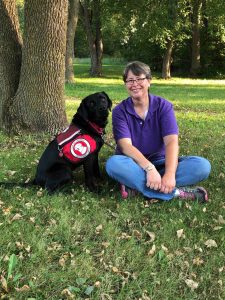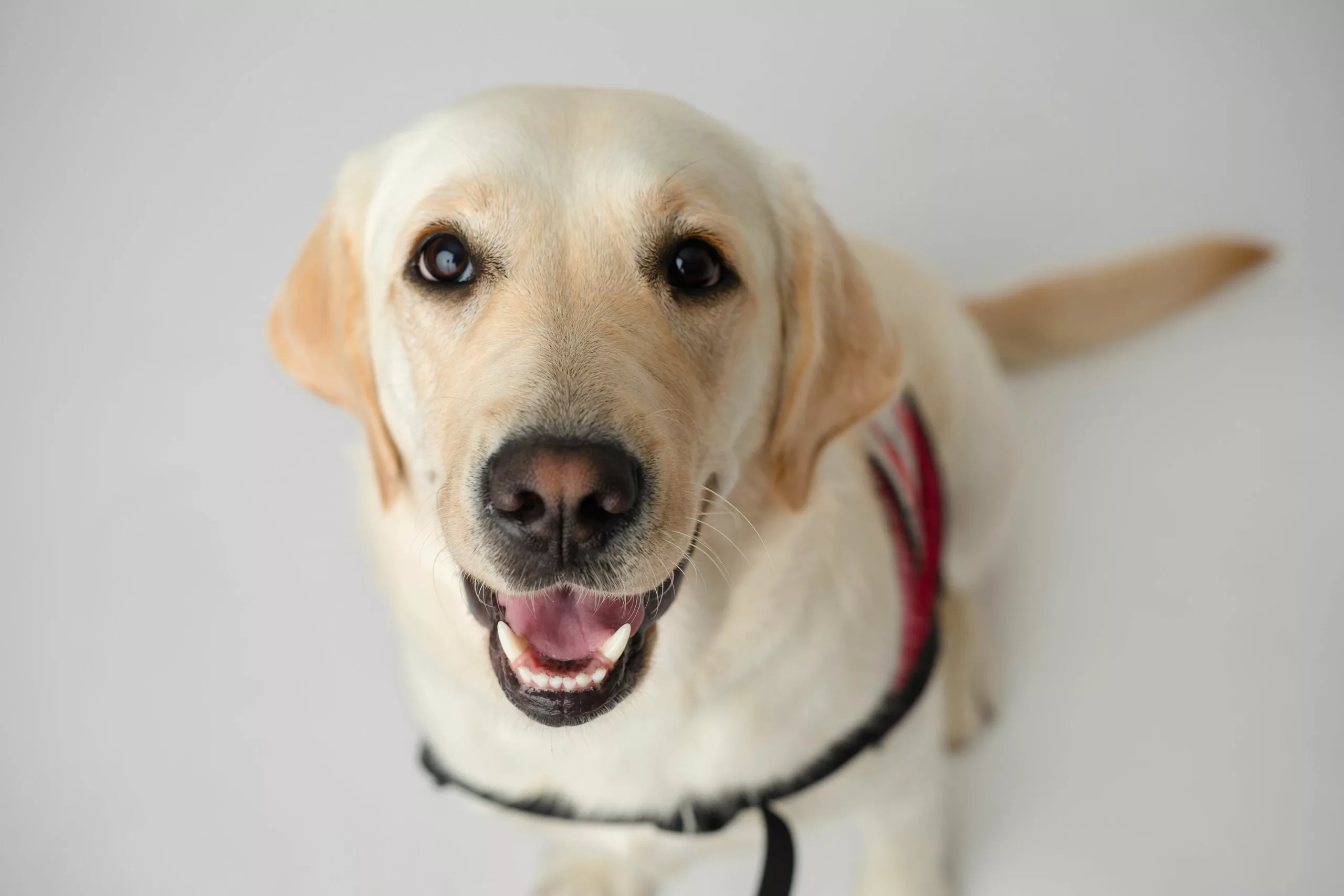“It’s really interesting where the training was nine years ago and what it is now,” says Mary. The second-time graduate of Can Do Canines experienced a much different training process when she was matched with her first Diabetes Assist Dog, Ebony, nine years ago.
After nine years of dedicated service, Ebony has entered retirement. “Ebony told me she was ready to retire,” explains Mary. The 10-year-old dog was becoming tired, and didn’t enjoy spontaneity like she once did. “I just had to respect that. She was done and I had to listen.”
 Once Ebony was enjoying retirement, Mary needed to get on the waiting list for a successor Diabetes Assist Dog. Those receiving successor dogs are moved to the top of the waiting list. She then waited for the right Diabetes Assist Dog to be trained. After five months, she was matched with a compact but committed Labrador Retriever named Maui.
Once Ebony was enjoying retirement, Mary needed to get on the waiting list for a successor Diabetes Assist Dog. Those receiving successor dogs are moved to the top of the waiting list. She then waited for the right Diabetes Assist Dog to be trained. After five months, she was matched with a compact but committed Labrador Retriever named Maui.
Training with Maui was much different than training with Ebony, because now trainers at Can Do Canines fully train scent work with Diabetes Assist Dogs before placing them with a client. “I’m really impressed with [Maui’s] skills because I don’t think I could have brought her to the level she’s at,” says Mary.
Although Maui received rigorous training with volunteers and staff, she also has a special quality that makes her a perfect match as a Diabetes Assist Dog—her persistence. Maui will alert, and continue to alert, until she senses that Mary’s levels have returned to normal. “Those dogs just don’t come along all the time,” Mary explains.
In February of 2007, Mary had her pancreas removed and received an auto-islet cell transplant to help maintain insulin production and secretion in her body. Unfortunately, the transplant was not entirely successful so she developed type 1 diabetes. Even though she doesn’t get consistent insulin from the transplant, every once in a while it does kick in. “And that’s why I can drop 40 points in five minutes,” she explains. “That’s a drop that a [glucose monitor] isn’t gonna catch.” So although Mary may have checked her blood sugar five minutes previously, there could be a rapid and dangerous change that Maui senses that Mary’s device doesn’t. So Maui’s persistence is key, as was Ebony’s when she worked with Mary.
In fact, “[Maui] can be 10, 15 minutes ahead of my [glucose monitor,]” says Mary. And Maui alerts to drops well before they reach a dangerous level. “She’s alerting between 80 and 90 so I’m not hitting the 40s and 50s,” Mary says.
“Because of my dogs, I’m alive … I’ve done so many things and had so many adventures because of having a service dog,” Mary says. “Thank you doesn’t even begin to express my gratitude.”
Thank you to all those who made this partnership possible:
Great Start Home: The Hollerud family
Puppy Raiser: The inmate handlers at FCI Waseca
Special Thanks: Sue Schlueter
Dog Donor: Martha Anderson
You: Thank you for your donations!





